-
Recent Lessons
- Keith Haring Murals in San Sebastián
- Keith Haring Murals
- Come To Know Keith Haring
- Organ Systems Mural
- City as Canvas: Artist Spotlight
- Printing with Objects
- Mural Making in the Style Of Keith Haring
- Subway Graffiti Project
- T-shirt Designer
- Keith Haring Semiotics Poster
- Introducing Keith Haring
- Discovering Keith Haring
- Haring Inspired Mural
- All Bottled Up!
- Thinking about Drawings as Symbols
More Resources
Recent Comments
- Daniel Wiener on Symbols & Signs
- Victoria E Sylvestre on Symbols & Signs
- Emoji: Modern Symbol Communication | OH THE ART PLACES WE CAN GO on Thinking about Drawings as Symbols
- coco on Keith Haring Biography
- Crack is Wack II | Muros hablados on Studying Mural: “Crack is Wack”
Duration: 2 Classes
Symbols & Signs
An activity provided by the Art Gallery of Ontario, this lesson seeks to help children identify and express their emotions through lines and symbols, just as Keith Haring did.
Line & Expression – 2D
An activity provided by the Art Gallery of Ontario designed to teach children about Keith Haring's art, specifically his art-making methods and his use of line and shape to create a symbolic language.
Creating a Cranimal
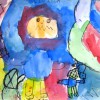
THIS LESSON USES THE NYC BLUEPRINT LEARNING STANDARDS.
Elementary students design their own mix and matched animals, using a lesson framework that emphasizes transformation.
This lesson accompanies the following additional lessons:
"Clay for Fun"
"Cranimals in 3D"
"Paper Sculpture Habitats"
Tabletop Graffiti Mural
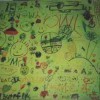
When an art teacher from a YMCA in Florida decided to clean up her shabby tables and teach her students about graffiti art, she decided to combine the projects and revive the tables with art! A strong emphasis on collaboration and cooperation led to a classroom full of personalized furniture.
Drawings & Collage
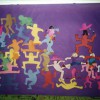
Sent in by the YMCA in Sarasota, FLorida, this lesson explores the use of multiple figures in the medium of collage.
Hip Hop, Skip, and Jump
This program was designed to be a take-home activity for children in conjunction with the exhibition of Keith Haring's work at the Whitney Museum in New York City.
Cranimals in 3D
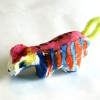
THIS LESSON USES THE NYC BLUEPRINT LEARNING STANDARDS.
Elementary students design their own mix and matched animals, using a lesson framework that emphasizes transformation, then they experiment with clay and shape their animals into 3D sculptures.
This lesson accompanies the following additional lessons:
"Clay for Fun"
"Creating a Cranimal"
"Paper Sculpture Habitats"
Mixing Up Magic
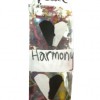
THIS LESSON USES THE NYC BLUEPRINT LEARNING STANDARDS.
This lesson is designed to allow students to experiment with the roles of scientists and graphic designers. Students will design a magic potion. The lesson gives students a chance to practice math and science skills such as mixing and measuring while learning about color, and design.
Texture: Wild Things
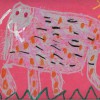
THIS LESSON USES THE NYC BLUEPRINT LEARNING STANDARDS.
This lesson is part one of a three lesson unit designed to teach young students (first or second grade) about various types of line, and pattern. This lesson allows children to learn how illustrators apply their knowledge of line and shading techniques to denote texture.
Pattern and Shading
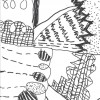
THIS LESSON USES THE NYC BLUEPRINT LEARNING STANDARDS.
This lesson is part two of a three lesson unit designed to teach young students (first or second grade) about various types of line, and pattern . Students will build upon their previous knowledge of line to develop an awareness of pattern and shading.
Lines: Invisible Journeys
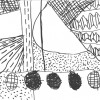
THIS LESSON USES THE NYC BLUEPRINT LEARNING STANDARDS.
This lesson is part one of a three lesson unit designed to teach young students (first or second grade) about various types of line, and texture. This lesson places emphasis on the movement students use to create lines by having them create visual roadmaps and follow them with gesture. The magic of their gesture will be reinforced as their invisible journeys are revealed to them through the technique of wax resist.
Crayon Rubbing Flip Book
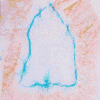
THIS LESSON USES THE NYC BLUEPRINT LEARNING STANDARDS.
This flip book lesson is designed to make learning about animation a more tactile, fun experience for young learners by eliminating tracing and bringing the line to life. Students will use their hands to gradually bend and reshape a line (floral wire), while recording this experience using crayon rubbings. The sequential crayon rubbings will become frames for their flip book.
This lesson is originally designed to accompany a math lesson about closed shapes, giving students an experience with the formation of flat sides, curves, and angles.